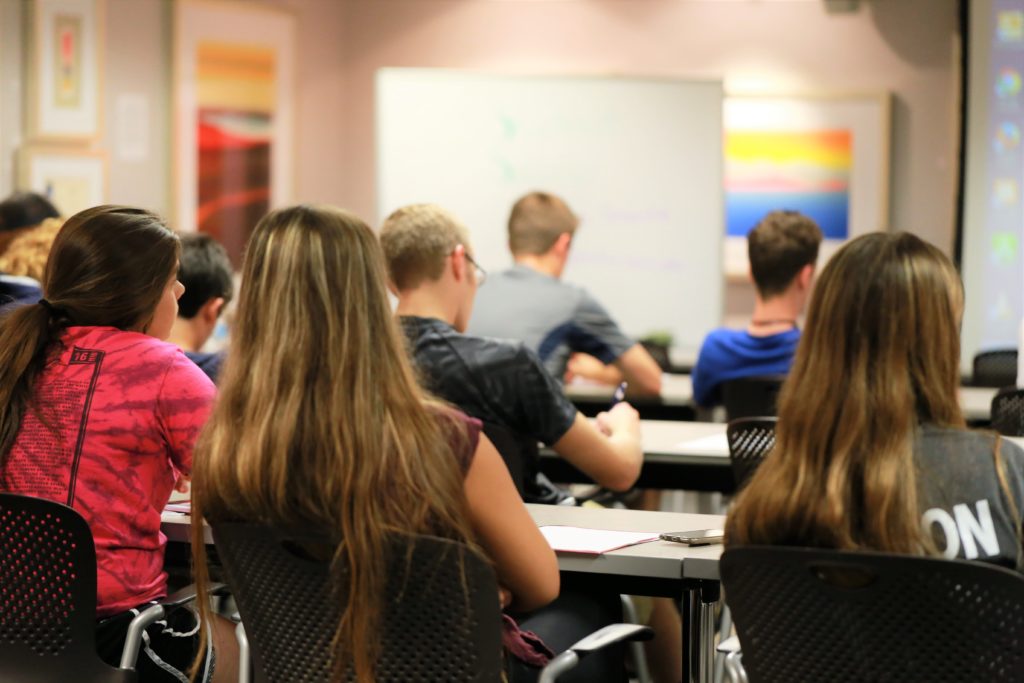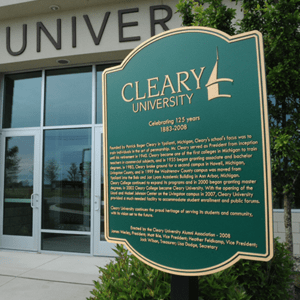When we talk about inclusivity, we often think about the ADA and accessibility, says Emily Barnes, Provost and Interim President.

But it’s so much more than that, especially at the university level. A high inclusivity model is the ultimate service to a student because it anticipates the needs of the learner before they ask for it.
High inclusivity models of learning design educational experiences around scheduling needs, different learning styles and the needs of the gap – whether that’s a knowledge gap, motivation gap, skills gap, environmental gap or something else altogether.
Of course, it’s up to the instructor to determine what the needs are and customize a course to meet those varying levels of need.
Motivation gap? Find a way to help students buy in. Skills gap? Create opportunities for repetition so practice leads to progress.
Environmental gaps could be no access to computers, lack of technology skills, or personal matters like finding childcare or transportation.
How can one course meet all of these needs at once? It’s actually easier than you think, Barnes says, and we at Cleary do it every day.
The high inclusivity model approaches all those gaps simultaneously. Inclusive learning means students can engage in learning and be successful, in a variety of environments, independent of format, she notes.
If it’s online and in-person, the course has to have equal experiences in both settings, so one learning or another does not miss opportunities. All barriers must come down to create an equitable learning experience for all students.

When it comes to choosing activities in learning experiences, for example, if it can’t be done online, then it can’t be done on-ground.
When a course is online, we have live conferencing, phone calls, chats, videos, and other collaborative cloud-based environments. Some students like online discussions, while others can’t stand them. So, perhaps we create an option to collect sources from the web, be they videos or pictures, and each student submits their findings on an online bulletin board.
At Cleary, we make sure every video has the option for closed captions. We ensure every video, image, discussion, book, and learning resource appeals to the masses, meaning it’s multi-gendered, multi-racial, and inclusive for every student who is going to be reading, listening and absorbing the information.
One lecture might feature a teacher on video with closed captions, a PowerPoint, a written lesson, and the student has all of these options and the choice of which material works best for their learning style. We strive for everything to be ADA-compliant before it goes out the door.
Another piece of our high inclusivity engagement model is that it must work across every platform, every device, every accessibility tool. We design courses and web pages using W3C, the Worldwide Web Consortium, to make sure our pages, our font sizes, our font resolutions, are ADA-compliant and appeal to everybody in the world.
We want to appeal to a wide demographic. We strive to use approachable language and universal styles.
Meeting the needs of the learner before they have to ask, understanding the variety of learning styles, to create an ease of learning for our students, makes us a very audience-conscious university. We don’t want to create barriers to learning for anyone.

This style not only informs how we teach at Cleary; it has trickled down into how we communicate internally among staff and faculty, and on campus.
For a long time, we had email updates and printed newsletters. Barnes started doing weekly videos with captions and text so we communicate easily and accessibly across the whole Cleary community. This approach is more alive, more appealing, more human.
Education is a human endeavor. It’s a person-to-person engagement. Without seeing the flair of the culture, it’s hard to know how to fit into the flow of the learning.
At Cleary, it is our top priority to make sure everyone – traditional 18-year-old college student and non-traditional career professional returning to the classroom – feels at home in our courses, and on our campus. And this is how we do it.



